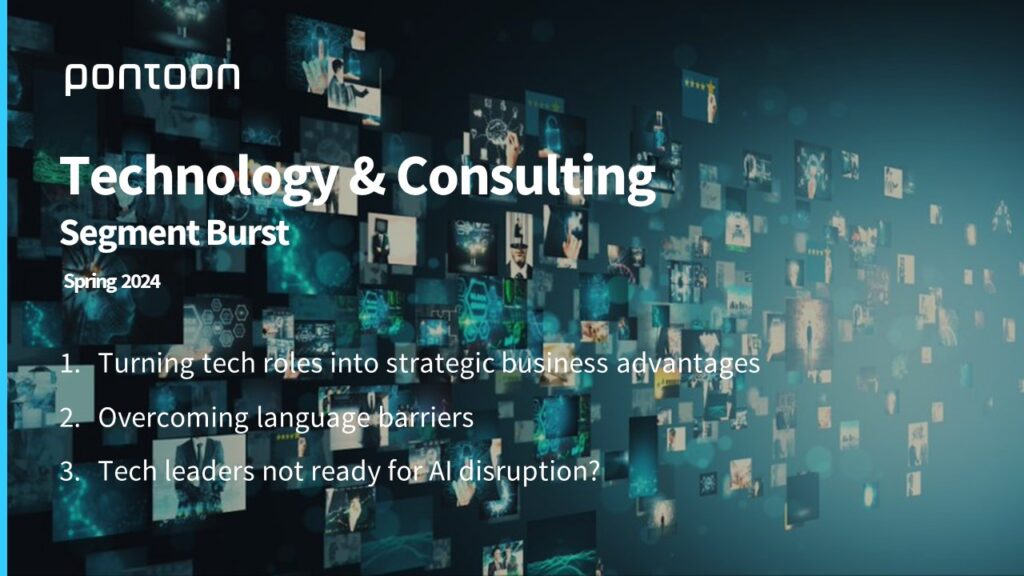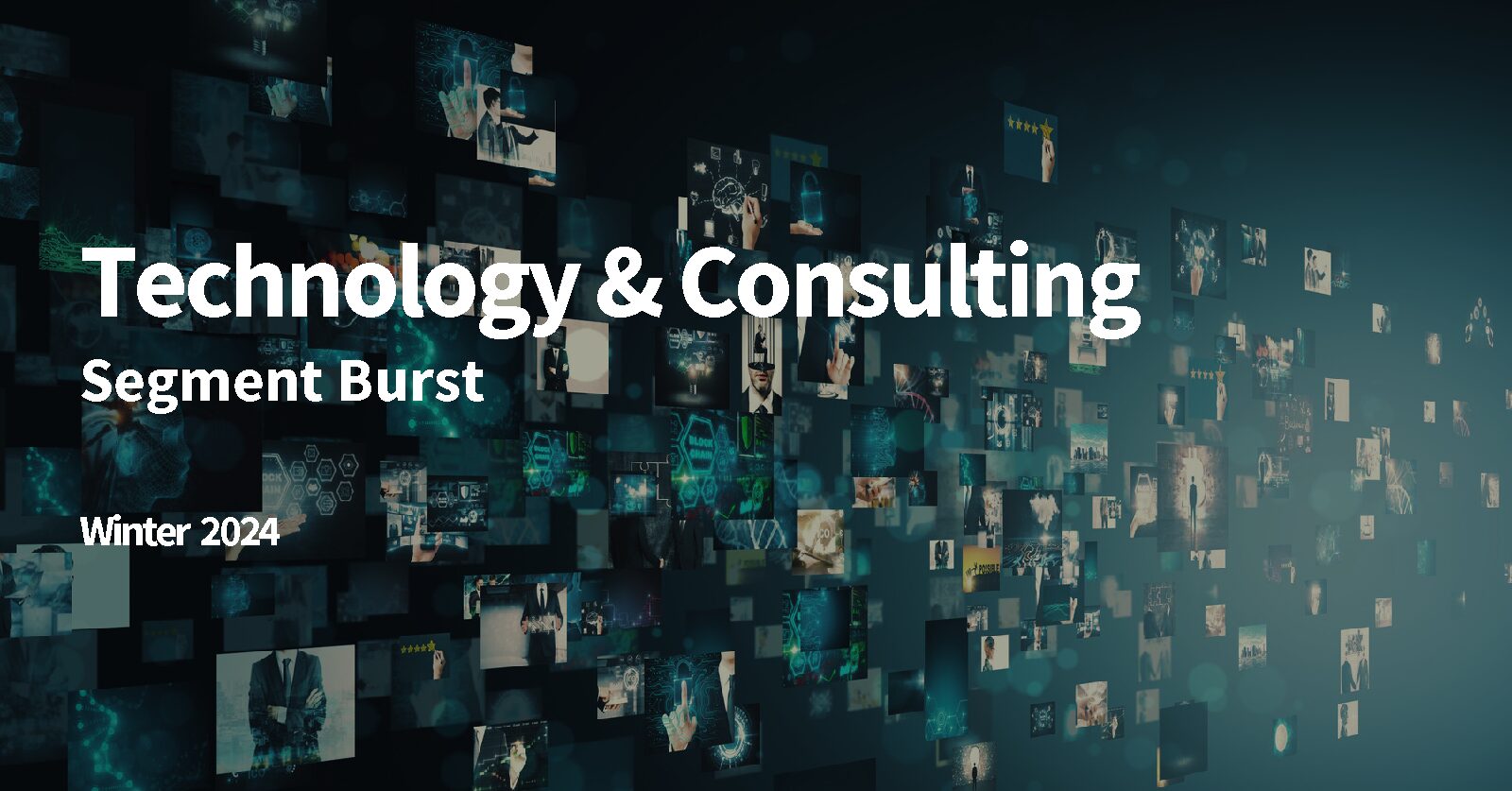Tech talent acquisition trends
Research
.
In the Spring 2024 Technology and Consulting Segment Burst, we explore the most recent trends in tech talent acquisition trends, including turning tech contingent tech roles into strategic business advantages, overcoming language barriers at work, and vital tech takeaways from the Adecco Group’s latest business leaders report “Leading through the Great Disruption“.
Tech talent acquisition as a strategic business advantages
Technology companies increasingly leverage contingent workers, a strategic shift driven by several key factors that underscore the industry’s forward-thinking approach to workforce management. This trend is a response to evolving market demands and a deliberate move to harness flexibility, innovation, and expertise in a rapidly changing technological landscape.
The decision to integrate more contingent workers into their operations is underpinned by compelling data, including a notable decline in negative attrition rates within this labour segment in tech firms, signalling a successful alignment of company needs with workforce capabilities and expectations.
According to Pontoon’s MSP programme data for technology clients, we saw a noteworthy decline in negative attrition rates—from 7.8% in the second quarter to 4.1% by the third quarter of 2023. This trend emphasises the industry’s commitment to hiring contingent workers and investing in their development and integration into the core operational fabric.
Despite these positive developments, businesses must maintain a vigilant, strategic oversight of their contingent workforce strategies. Regular reviews ensure alignment with overarching business goals and cost-effectiveness, safeguarding against any misalignment that could dilute the benefits of this adaptive approach.
Our recommendation
To truly leverage the potential of contingent labour, tech companies must adopt a holistic contingent talent management strategy to include:
Flexibility and scalability: In a rapidly evolving tech industry, flexibility is crucial for scaling workforce according to project needs. Contingent workers enable quick adjustments without permanent commitments.
Access to specialised skills: Tech companies benefit from accessing specialised skills through contingent workers. This is crucial for short-term projects and emerging technologies.
Overcoming language barriers
According to an April 2024 report by CompTIA, the demand for tech roles in the US has surged to its highest since August 2023. In March alone, there were 191,000 new tech job postings, marking an increase of 8,000 from February. This uptick underscores the growing need for firms to source tech talent strategically and highlights the robust opportunities available for bi-lingual professionals in the sector.
It’s important to note that over half of the current US labour market’s expansion can be credited to the contributions of foreign-born and refugee workers. Furthermore, statistics show that 66 million people, or 21.6% of the US population, speak a language other than English at home.
The data and tech job growth highlight the urgent need for tech firms to overcome language barriers in diverse teams. Developing clear strategies ensures inclusive communication, fostering an environment that benefits all stakeholders.
Employers can use AI tools like real-time translation and chatbots to enhance efficiency and support teamwork across languages.
A strategic, consultative approach rooted in data insights is crucial. This involves listening to diverse workforce needs, understanding their challenges, and crafting targeted solutions to promote effective communication.
Tech leaders not ready for AI disruption?
To harness AI’s transformative power, leaders must first grasp its challenges and opportunities to craft a strategic approach. However, a significant challenge within the C-suite has emerged.
The Adecco Group surveyed 2,000 top executives across six important sectors, including technology. They focused on understanding these leaders’ hurdles with digital change, especially in managing and implementing AI.
The findings reveal a significant insight. A vast majority (82%) of global tech firm leaders recognise the crucial role of GenAI in enhancing skills and development. However, less than half (48%) are confident in their leadership team’s ability to grasp AI’s potential risks and opportunities fully. This highlights a pressing need for strategic development in AI competencies among leadership to navigate the future confidently.
This shortfall directly affects the broader workforce’s preparedness to embrace AI-driven changes. Therefore, leaders must cultivate an adaptive mindset. They need to swiftly respond to the evolving landscape of AI. That’s the only way to ensure their organisations remain at the forefront of innovation.
Moreover, tech organisations need to take decisive steps towards comprehensive education on AI for everyone, including those in leadership roles. Understanding AI’s impact, relevance, and the vast opportunities it presents is fundamental. As such, companies should provide training to advance responsible AI usage.
“The nature of work will change with AI, and leaders must adapt with a more holistic and skills-based approach. It’s time to redefine leadership, focusing on critical thinking and creativity—skills that are most in deficit for leaders today.”
– Valerie Beaulieu-James, President, Pontoon at Davos 2024
It’s time for leaders to tackle AI disruption head-on, moving swiftly beyond experimenting with AI to creating real business value. This requires leaders to continually update their knowledge to stay ahead of rapid technological advancements. Cultivating an adaptive mindset is critical; regular coaching can help leaders navigate the complexities of change and uncertainty confidently.
Related Post
In the Winter 2024 Technology and Consulting Segment Burst, we explore the most recent trends in the sector including top contingent tech roles, human and AI collaboration in hiring, and ...





